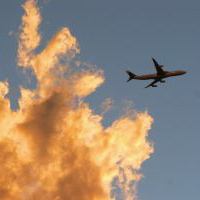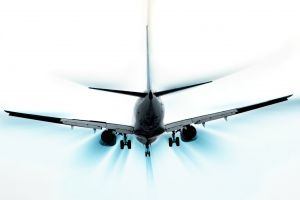 To get more perspective on the recent crash of Continental Airlines Flight 3407 in Buffalo last Thursday, Peter spoke with retired American Airlines pilot Tom Casey.
To get more perspective on the recent crash of Continental Airlines Flight 3407 in Buffalo last Thursday, Peter spoke with retired American Airlines pilot Tom Casey.
PG: I want to ask you as a pilot—I’m assuming the two things pilots fear the most is icing and fire.
TC: You’re right. Modern airlines have a tremendous safety record, and pilots and airliners fly through all kinds of weather conditions. This situation is interesting and unique because the crew evidently had very little warning. At least, they didn’t perceive the dire straits they were in. It’s going to take the NTSB analysis of the voice recorder to find the narrative for this.
PG: So far, they’ve been able to decipher a conversation in the cockpit in which the pilot and co-pilot discussed what they said was “significant ice buildup” on the wings.
TC: That’s right. If that was the case, then the pitch-up and the rolling moments, and the basically vertical plunge of 1,500 feet is consistent with ice contamination.
PG: Where do you go from there? In the turbo prop world, most operators don’t like to fly them in ice and cold conditions. They moved them out of the area.
TC: Yes, and I heard an earlier reference by former NTSB Chairman Jim Hall to the Roselawn crash. This was an incident in which the NTSB made recommendations that the FAA did not take up. This happens between those two organizations, with the NTSB being investigative and the FAA being enforcement.
PG: What were those recommendations?
TC: I believe the recommendations were that they change the deicing system on that particular airplane and that particular wing.
PG: And then the FAA didn’t proceed on that recommendation.
TC: Not according to Jim Hall.
 Peter then spoke with Ann Ryan, a commercial airline pilot who has flown similar types of planes.
Peter then spoke with Ann Ryan, a commercial airline pilot who has flown similar types of planes.
PG: The last time we spoke was the remarkable situation of the US Airways plane landing in the Hudson. As a pilot, I’m sure that especially this time of year, flying at those altitudes, you’ve got to be concerned about ice.
AR: Yes, in the winter icing is always a factor in flying. It’s something we’re prepared for and prepared to deal with.
PG: And in this situation, the plane is equipped with a deicing boot which is designed to crack the ice off.
AR: That’s correct. It’s rubber and it’s designed to break off the ice as it inflates.
PG: And this particular plane was equipped with a lot of those systems. So here you are flying at this low altitude and the options aren’t great, are they?
AR: No, the lower you are to the ground, the less of a chance you have to correct a bad situation.
PG: This is a situation in which other pilots in the area were reporting ice, which we found out later. The pilots on this particular plane discussed it. Once you’re in that air environment, you know you’ve got an icing situation, do you really have an idea that your systems are working?
AR: On my aircraft, we would have failure messages and horns and bells and whistles to indicate that there was a problem with the icing system. Hopefully, if the warning systems were working, you’d know. I’m not sure about that aircraft though.
PG: Well, let’s assume, you know you’ve got an icing situation. What would you as a pilot do? What are your options?
AR: If you’re on approach, a significant buildup of ice is a lot. You’re going to think about increasing your speeds for approach and landing to counter-attack the effects that bringing in flaps might have. You don’t know how the aircraft is going to be affected; all you know is it’s going to be affected in a negative fashion.
PG: When they issued a directive on this particular aircraft type, one of the things they mentioned is that the plane was not properly equipped in an icing situation to give the pilots an accurate readout of their air speed. That’s significant.
AR: That’s very significant. I didn’t know that.
PG: If you don’t know what your airspeed is—
AR: You can’t adjust for it.
PG: Now we’re going to see the investigation happen, and then we not only have to learn from these situations but also apply those lessons.
AR: When they do come out with the final results, airline pilots will be looking at this case for years to come.
By Peter Greenberg from Peter Greenberg Worldwide Radio.
Previous coverage of the crash of Flight 3407:
- The Crash of Flight 340: Interview With Greg Feith, Former NTSB Investigator
- Continental Plane Crash Kills 50
- Ice, Autopilot Examined as Possible Causes for Buffalo Plane Crash
Read more about air travel in our Airlines & Airports section.
Learn more about keeping safe with our Travel Safety & Security category.












